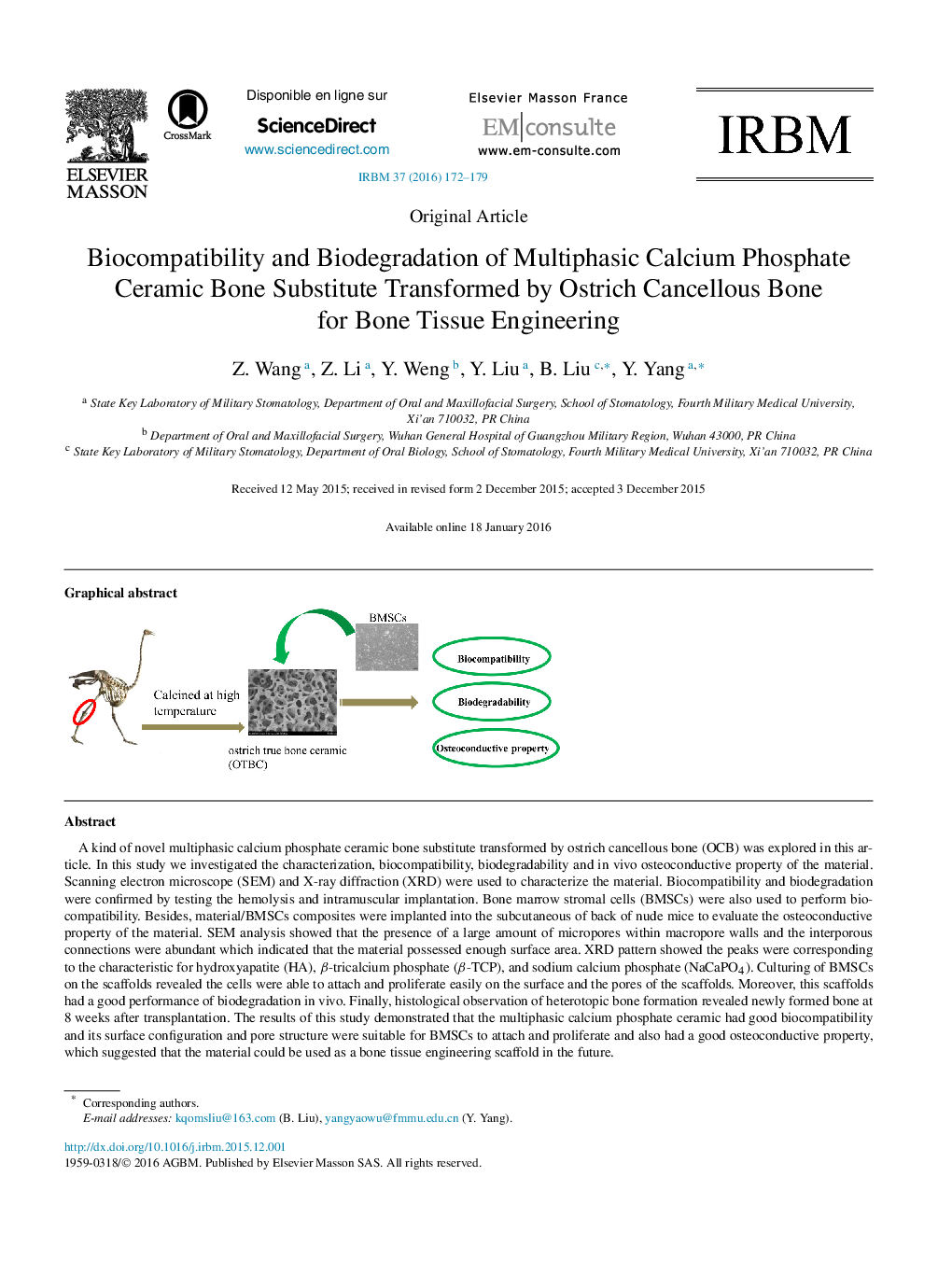| کد مقاله | کد نشریه | سال انتشار | مقاله انگلیسی | نسخه تمام متن |
|---|---|---|---|---|
| 870753 | 910018 | 2016 | 8 صفحه PDF | دانلود رایگان |
• Ostrich true bone ceramic (OTBC) was successfully prepared from Ostrich cancellous bone.
• The surface configuration and pore structure of OTBC were suitable for BMSCs to attach and proliferate.
• OTBC had a good biocompatibility, biodegradability and osteoconductive property.
• OTBC scaffolds could be used as a bone tissue engineering scaffold in the future.
A kind of novel multiphasic calcium phosphate ceramic bone substitute transformed by ostrich cancellous bone (OCB) was explored in this article. In this study we investigated the characterization, biocompatibility, biodegradability and in vivo osteoconductive property of the material. Scanning electron microscope (SEM) and X-ray diffraction (XRD) were used to characterize the material. Biocompatibility and biodegradation were confirmed by testing the hemolysis and intramuscular implantation. Bone marrow stromal cells (BMSCs) were also used to perform biocompatibility. Besides, material/BMSCs composites were implanted into the subcutaneous of back of nude mice to evaluate the osteoconductive property of the material. SEM analysis showed that the presence of a large amount of micropores within macropore walls and the interporous connections were abundant which indicated that the material possessed enough surface area. XRD pattern showed the peaks were corresponding to the characteristic for hydroxyapatite (HA), β-tricalcium phosphate (β-TCP), and sodium calcium phosphate (NaCaPO4). Culturing of BMSCs on the scaffolds revealed the cells were able to attach and proliferate easily on the surface and the pores of the scaffolds. Moreover, this scaffolds had a good performance of biodegradation in vivo. Finally, histological observation of heterotopic bone formation revealed newly formed bone at 8 weeks after transplantation. The results of this study demonstrated that the multiphasic calcium phosphate ceramic had good biocompatibility and its surface configuration and pore structure were suitable for BMSCs to attach and proliferate and also had a good osteoconductive property, which suggested that the material could be used as a bone tissue engineering scaffold in the future.
Figure optionsDownload as PowerPoint slide
Journal: IRBM - Volume 37, Issue 3, June 2016, Pages 172–179
